Swiss artists remix Ferdinand Hodler for the 21st century
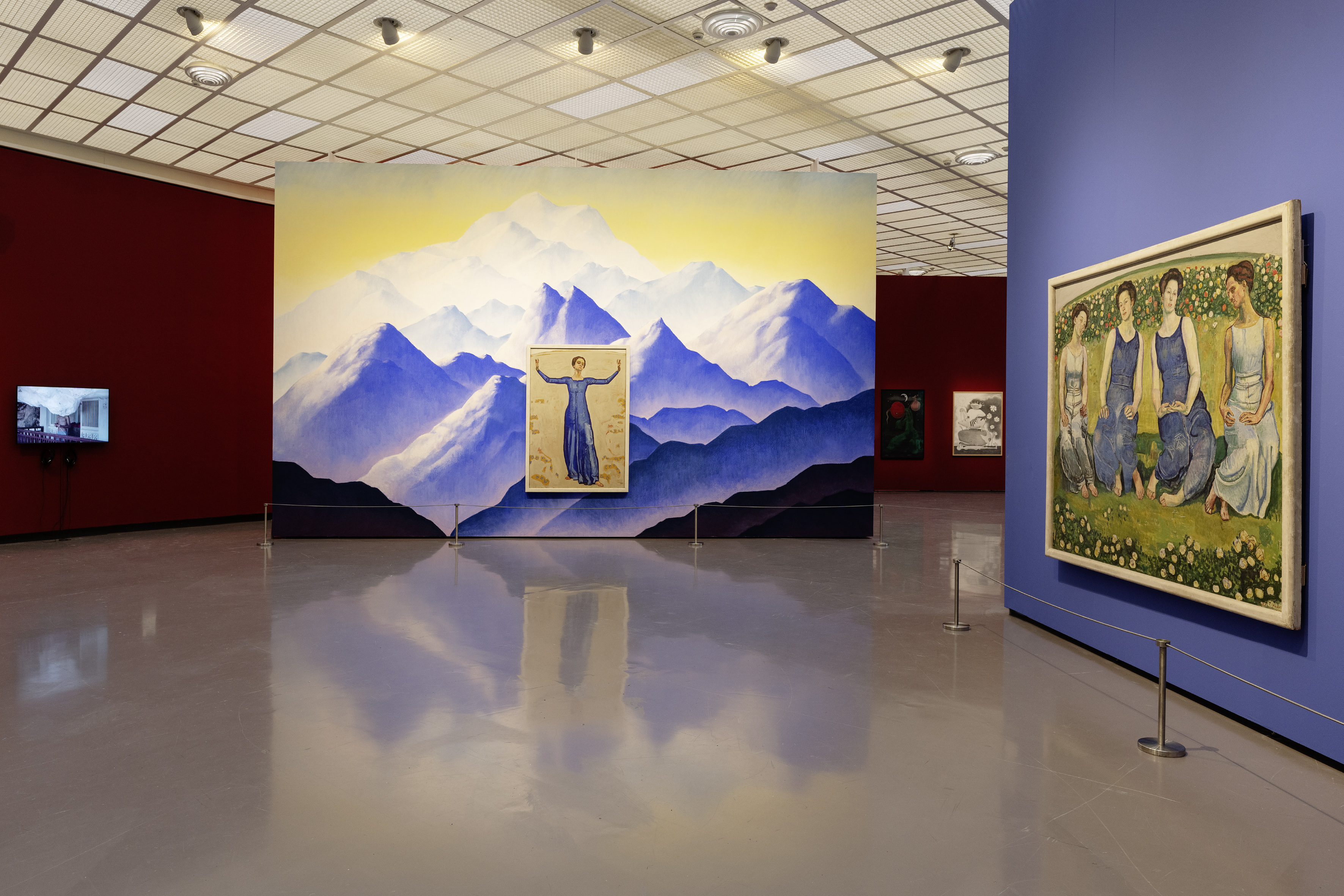
Ferdinand Hodler’s art has been repeatedly used to depict conservative or retrograde ideas of Swissness. Zurich’s Kunsthaus proposes a new take, highlighting Hodler’s more progressive stances through the eyes, and works, of contemporary artists.
A woman in a blue dress, her arms raised and face tilted, seems to be swaying in a solemn, solitary dance. The painting by Ferdinand Hodler, perhaps Switzerland’s best-known and best-loved modern artist, forms the centrepiece of an exhibition at the Zurich Museum of Art (Kunsthaus) called Apropos Hodler: Current Perspectives on an IconExternal link.
But instead of hanging on a blank museum wall, Lied in der Ferne (Song in the Distance, 1914) is mounted on a stylised mountainscape of cool blues and pale yellow by Nicolas Party, a contemporary artist and co-creator of the exhibition (see picture above).
The exhibition, which runs until the end of June, shows Hodler’s paintings with installations, photography, paintings and video works by about 30 contemporary artists, most of them Swiss. It can perhaps best be described as Hodler remixed and reloaded for the 21st century.
With the largest collection of Hodler’s art in the world after the Musée d’art et d’histoire in Geneva, the Kunsthaus has mounted multiple exhibitions of his work over the decades.
“We asked ourselves the questions: in which form could we once again show this canonical artist in a major exhibition, how can we see the old and familiar in a new and unexpected way?” Ann Demeester, the museum’s director since January 2023, writes in the catalogue. “We therefore decided not only to celebrate Hodler from an art-historical perspective but to foreground artists’ interpretations of his work.”
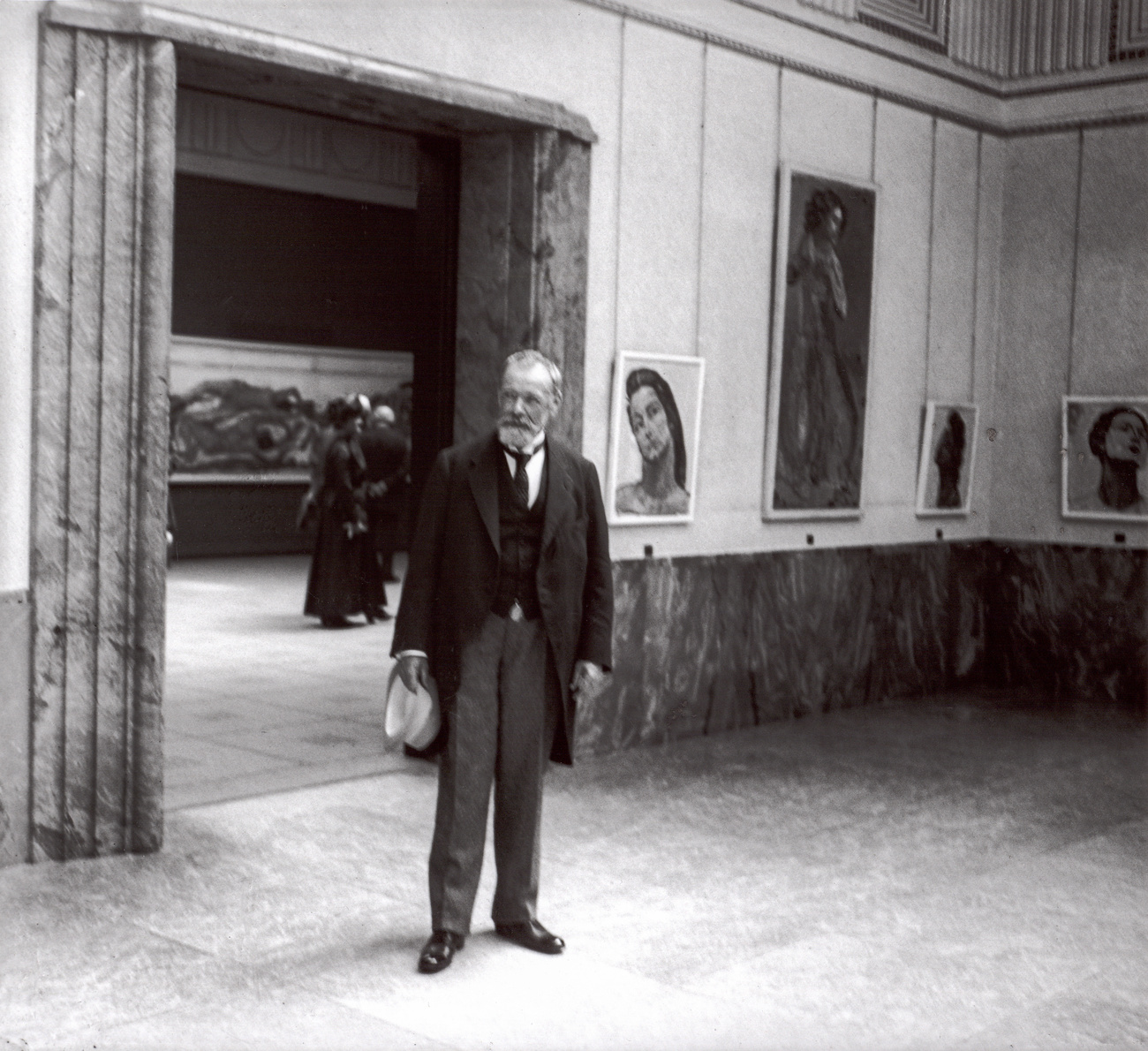
Since his death in 1918, Hodler has been viewed as the “incarnation of Swiss art”, as one art historian put it; even “the soul of our people”. To the curatorial team of the Kunsthaus exhibition – led by Sandra Gianfreda and Cathérine Hug and comprising a group of contemporary artists – Hodler’s image, steeped in a sense of national identity that seems outdated to modern-day artists, needed to be dusted off and shaken.
Alternative narratives
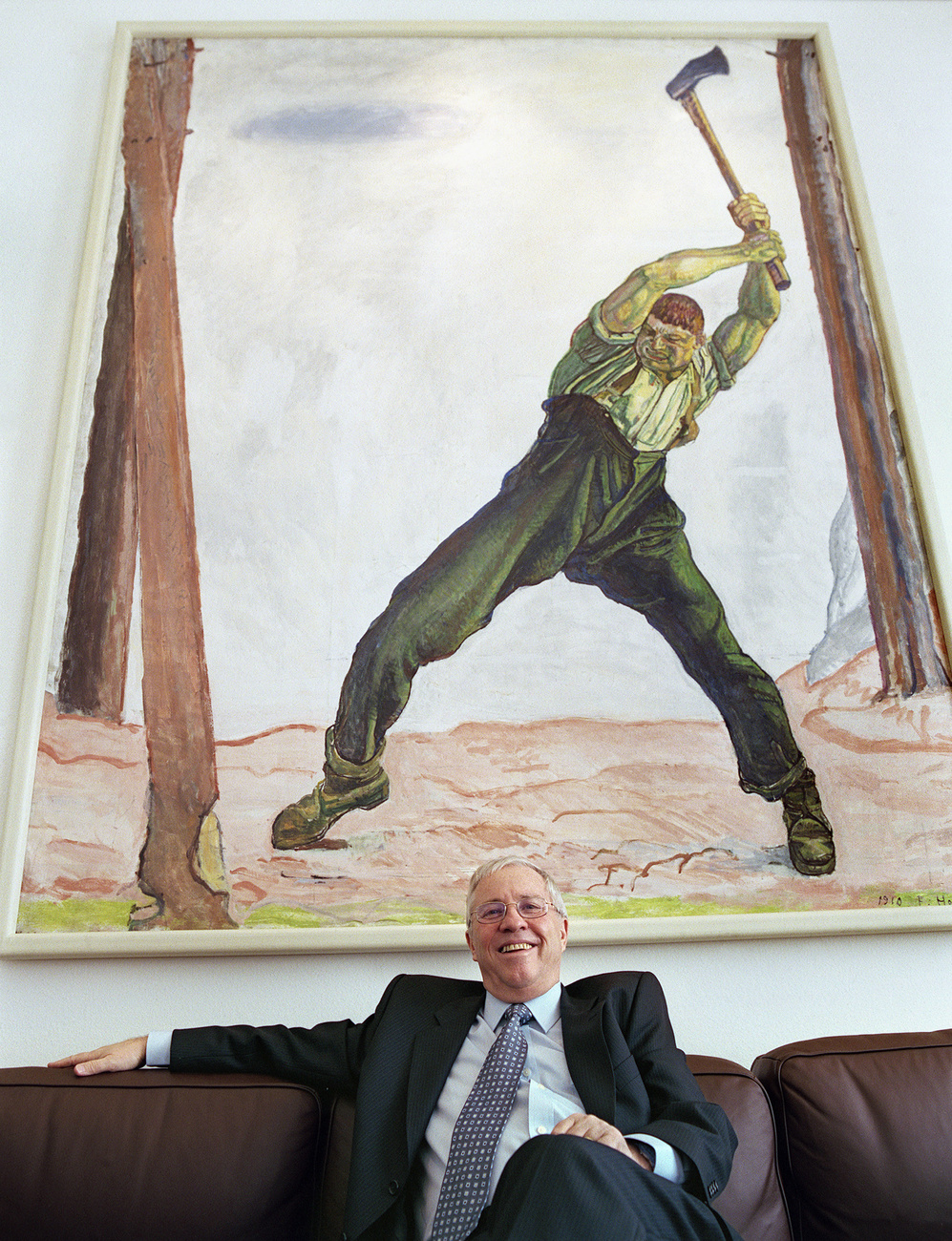
Media campaigns enlisting Hodler’s paintings for right-wing Swiss political causes over the years are partly to blame for his conservative pigeon-holing. One of his most famous works, for instance, Der Holzfäller (The Woodcutter, 1910), has been coopted for issues as diverse as the wealth tax, abolition of radio and television fees, and upgrading compulsory community service. The woodcutter’s bulging biceps and mighty swing are the embodiment of power, energy and determination, all concentrated on a humble rural activity that chimes with a nostalgic Swiss idyll of the simple, virtuous life.
Contemporary artists in the exhibition challenge this image: in an interactive video work called Wie du in den Wald rufst (How you call out in the forest), Frantiček Klossner, a multimedia artist, shows a tranquil woodland, apparently devoid of humans. But if visitors speak into a microphone, a naked man emerges, only to seek a new hiding place in a cave underground. Klossner’s shy forest man seems the antithesis of the muscular woodcutter.
In Je suis une femme, pourquoi pas vous? (I am a woman, why are you not?), Marie-Antoinette Chiarenza, one half of the Zurich-based artist duo RELAX, is photographed in front of Hodler’s iconic painting, walking towards us purposefully in a red leather jacket and black dress with an axe slung over one shoulder. Power, she seems to say, does not necessarily require a rippling physique and brute strength.
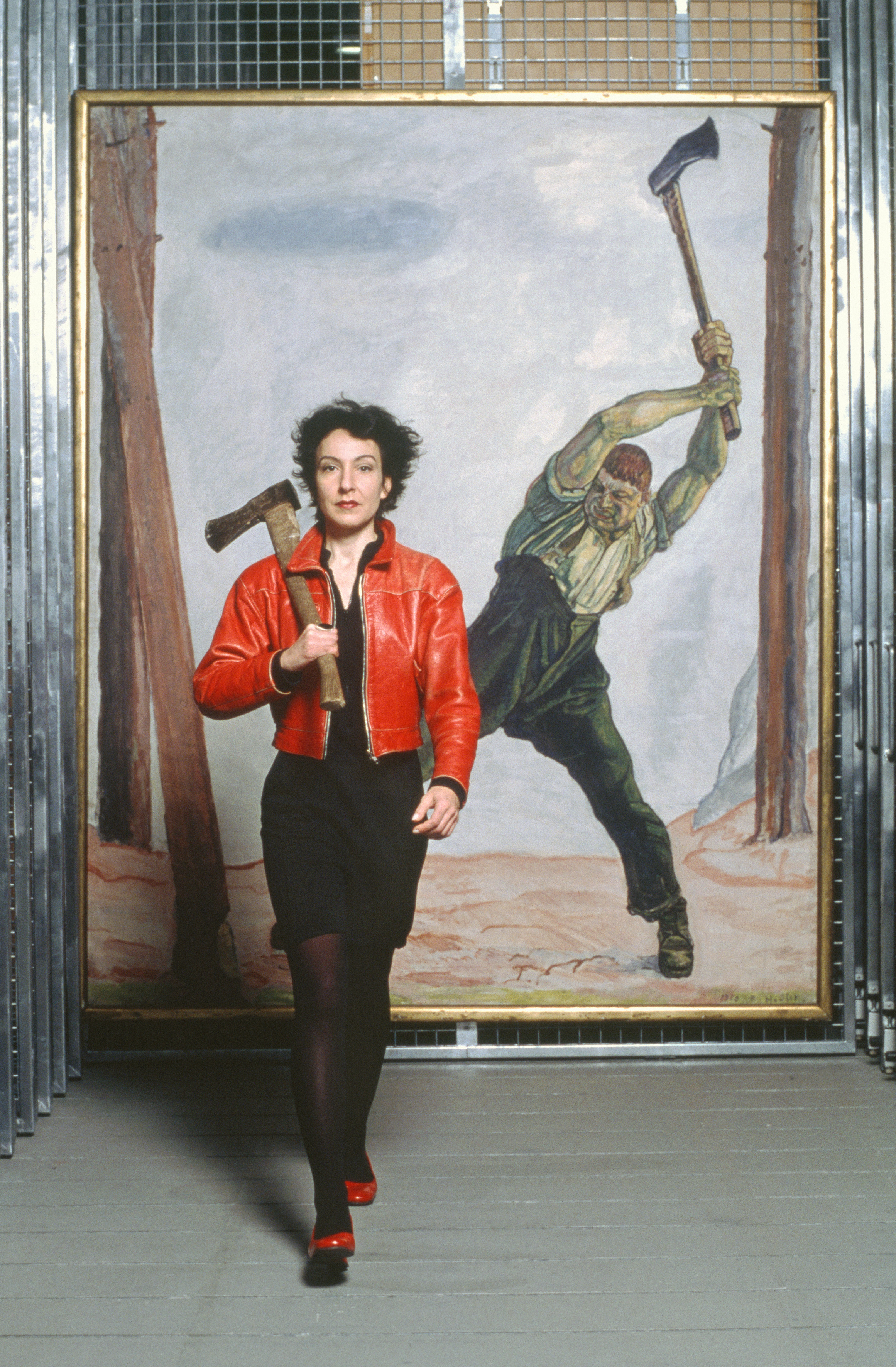
The exhibition points out that Hodler was not only a pioneering artist capable of triggering scandals with provocative works, but he was also politically progressive in some respects.
His two paintings Die Wahrheit (Truth), both on show, take issue with the unjust conviction of an anti-Semitic hate campaign against the Jewish officer Alfred Dreyfus in France. The poses of the semi-clothed figures inspired a new performance work by Nils Amadeus Lange, who incorporated them into a choreography for the exhibition.
Hodler’s view of women may have been conservative, even for his time – in 1907, he firmly rejected the acceptance of women artists into the Society of Swiss Painters, Sculptors and Architects. But he portrayed them as powerful: Das mutige Weib (The Bold Woman, 1886) shows a sturdily built working-class woman rowing a boat in a stormy sea. From the artist’s bird’s-eye perspective, she is fighting the elements as the waves appear to enter the boat. This striking painting is displayed alongside nude black-and-white self-portraits by the large-bodied artist Laura Aguilar, who died in 2018. Aguilar shows her body in a dialogue with nature, reflecting the shapes of trees and boulders.
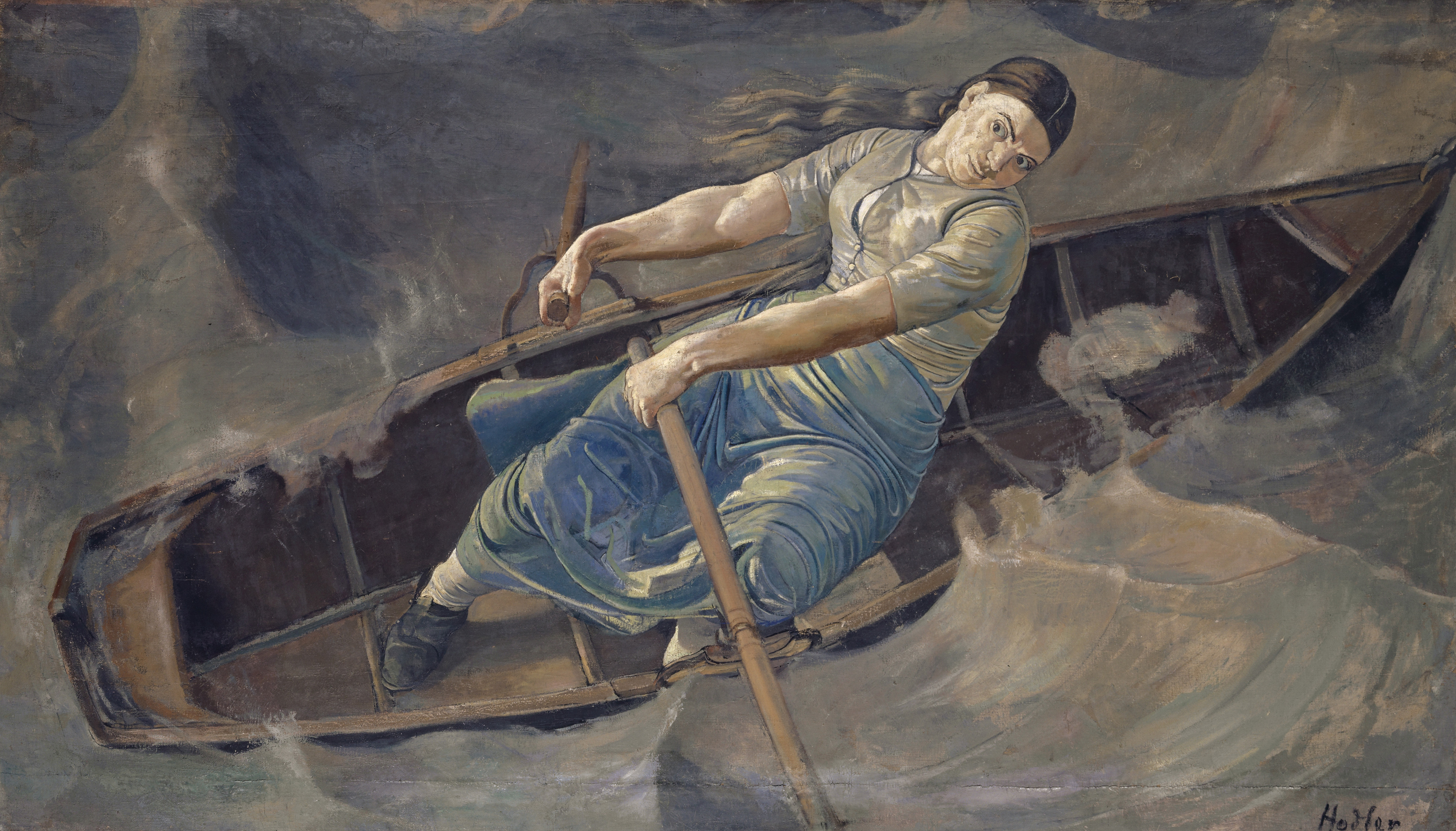
Hodler’s landscapes were his bestsellers in his lifetime and are perhaps still the most popular of his paintings today. His idealised views of lakes, glaciers, forests and mountains, often painted in vibrant colours, are evocative and beautiful. David Hockney’s 2008 painting Felled Trees on Woldgate offers a modern counterpart in the exhibition.
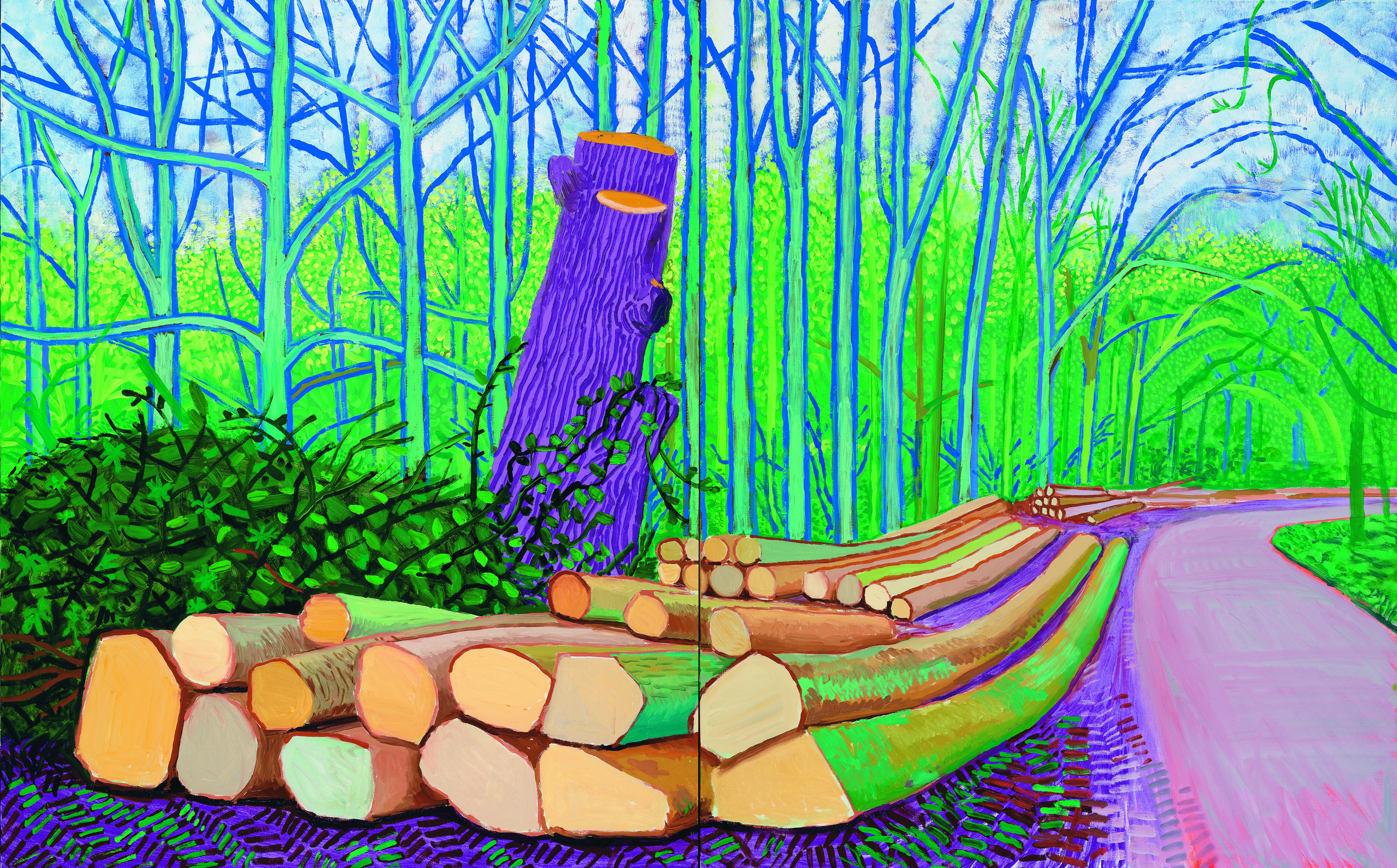
But for contemporary artists, this vision of nature is under threat, as two film works on show demonstrate. Uriel Orlow’s From One to Seventeen documents declining biodiversity at high altitudes because of global warming: Christina Hemauer and Roman Keller tell a fascinating, little-known story in A Road Not Taken. The Story of the Jimmy Carter White House Solar Installation.
On the reverse of the chill mountainscape by Swiss painter Nicolas Party that frames the dancing woman in a blue dress, a much hotter scene of a forest in flames serves as a backdrop for Hodler’s soldier carrying a halberd. In this context, the soldier could be a fire-fighter battling the impact of climate change – one illustration of how a change of scene can lead to new and unexpected perspectives on a familiar image.
Edited by Virginie Mangin
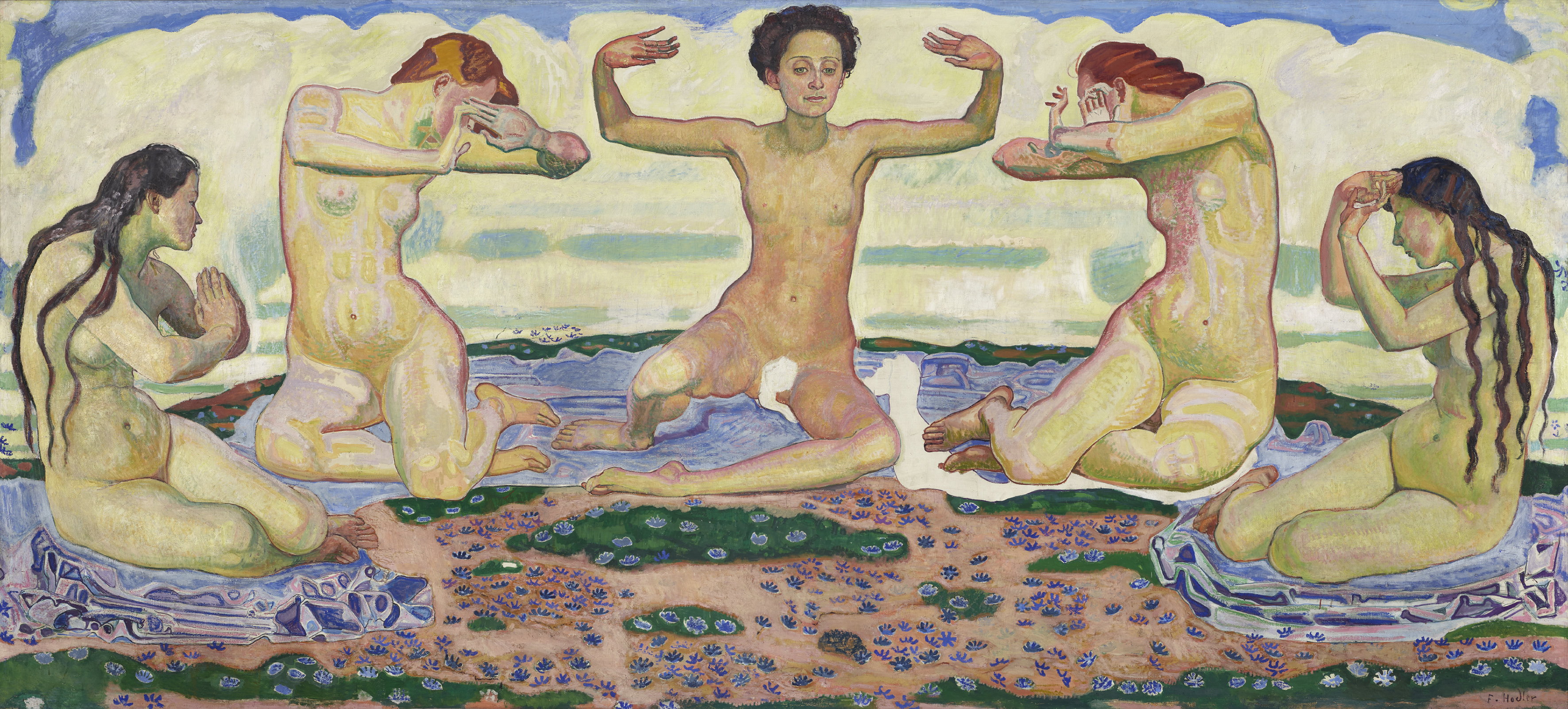

In compliance with the JTI standards
More: SWI swissinfo.ch certified by the Journalism Trust Initiative
You can find an overview of ongoing debates with our journalists here . Please join us!
If you want to start a conversation about a topic raised in this article or want to report factual errors, email us at english@swissinfo.ch.